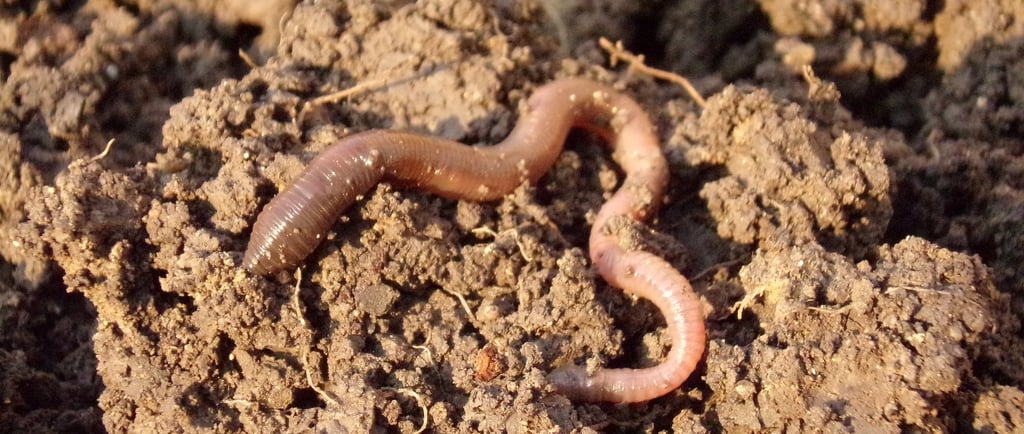🪱 Guardians of the Soil 🌿 The Earthworm 🌍✨
🪱 A follow-up story branching from the Zoology chapter in the Biology Album. 🌍✨ The Guardians of the Soil invites children to explore one of the Earth’s most ancient and important animals—creatures that have quietly shaped the soil beneath our feet for millions of years. 🌱🪱 Through the worm’s soft body, lack of bones, muscular movement, and sensitivity to vibrations, children deepen their understanding of invertebrates, while connecting the worm’s ecological role to soil health, plant growth, and the hidden work of decomposers. ♻️🌾 This story builds upon earlier classification work, introducing worms as part of the larger story of how animals adapt to life underground without sight or limbs, while preparing the way for further study of food chains, ecosystems, and animal functions. It invites children to wonder: “What other invisible workers live under the ground… and how do they keep our world alive?” 🌧️💭
BIOLOGY STORIES
4/28/20253 min read


In the garden, in the ground,
Tiny builders can be found.
Dig a little, soft and slow—
Earth’s small heroes live below. 🌎🪱
If we dig with our hands into the soil we will find a little wriggling surprise! 🌱🖐️ Something soft, pinkish-brown, and moving like a tiny living thread through the earth.It is one of Earth’s oldest gardeners and greatest builders! 🌍✨ It's name comes from the Old English wyrm, meaning “serpent” or “dragon.” 🐉✨ But the little earthworm doesn’t breathe fire—it breathes life into the soil!
The ancient scientist Aristotle once said that worms are the intestines of the Earth. 🏛️🌎Worms live in a hidden world just beneath our feet, digging tunnels, turning the soil, and letting in air and water to feed the roots of plants. 🌬️🌱🪱
🌟 Unlike creatures with skeletons—like birds, frogs, or humans—worms are soft all the way through. Instead of bones, they use strong muscles to squeeze and stretch their body segments, much like an accordion playing a silent underground song. 🪗🌿 Their bodies have tiny bristly hairs called setae 👏 set 👏 ae 👏 (Latin for “bristles”). These tiny hairs help the worm grip the soil and push forward or backward—like invisible little boots! 🥾 And that’s why,birds play a serious game of tug-of-war when trying to pull a worm out of the ground. 🐦🪱💪
Imagine having no eyes to see and no ears to hear — you have to use your whole body as a sensing map! Earthworms feel vibrations, sense moisture, and detect light and darkness—all through their skin! That’s why, after a rainstorm, worms wriggle to the surface—it’s easier to move in wet soil, and they can find new places to live. 🌧️🌱
But some clever birds, like seagulls and robins, have learned a special trick! 🐦🪱 They tap their feet on the ground to mimic the sound of raindrops, fooling the worms into thinking it’s raining—and luring them to the surface for a tasty snack! 🌧️👣
When you gently observe a worm, you’ll notice that both ends look a little alike — long, soft, and pointy. But look closely! 🔍 There’s a secret way to tell which end is the mouth and which is the tail.
🪱 Near the mouth, you might spot a thicker, lighter-colored band wrapped around the body. This special band is called the clitellum 👏 cli 👏 tell 👏 um 👏 — from the Latin clitellae, meaning “small saddle.”🐎✨ The clitellum is very important: it helps the worm make tiny egg capsules.🥚🌟
And just nearby, hidden inside the worm’s body, is another hardworking organ shared by birds and worms alike: the gizzard—a kind of grinding stomach! 🛠️🌱The gizzard is a powerful muscle that grinds up bits of soil, rotting leaves, and tiny organisms—turning them into rich, dark humus—the best food a plant could ever ask for! 🌱♻️
🌿 Without worms, the soil would become hard, empty, and lifeless. Plants would struggle. Worms recycle death into new life—they are the intestines of the Earth, just as the ancient scientist Aristotle once said. 🏛️🌎
🧠✨ And here’s something not many animals can do: If a worm’s body is injured, it can sometimes regrow parts of itself!Not all worms survive being cut, but many carry within them the quiet power of regeneration. 🌱🪄One of the most famous scientist who studied how life changes over time, Charles Darwin, spent the last years of his life studying worms. 🧪📝 He discovered that without worms, all fertile land would disappear.He called them “the most important animals in the history of the world.” 🌍✨
🌟 And now… let’s go outside!
Let’s dig our hands into the soil and see if we can find the little wiggling surprise, hard at work beneath our feet. 🪱🌱
I wonder… How deep do the worms build their tunnels? 🏗️ Can we see their tiny bristles helping them move?🪱 How do worms know which way is up and which way is down underground?🔎 How do worms breathe without lungs?🌍 What other creatures live underground, hidden from our eyes?
🌟 And here’s something else to wonder about… Have you ever thought—how do worms make more of themselves? 🪱❤️🪱 Well, that’s a whole other secret story… One that you can discover, research, and tell yourself! 📚✨
With Montessori joy,
Vanina 😊

